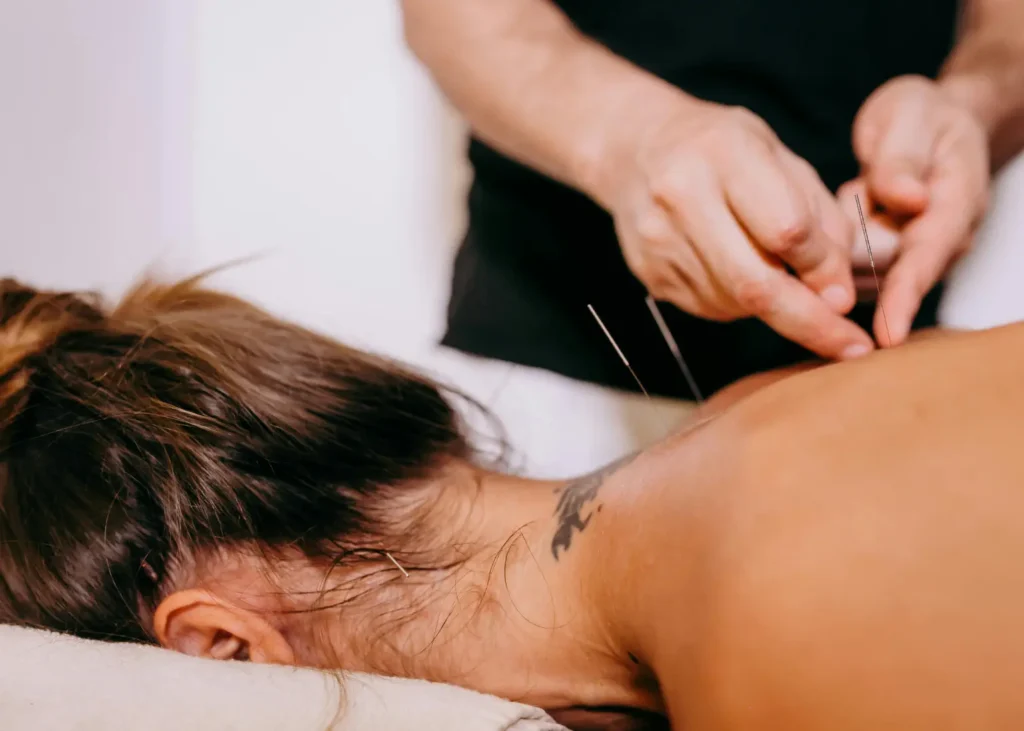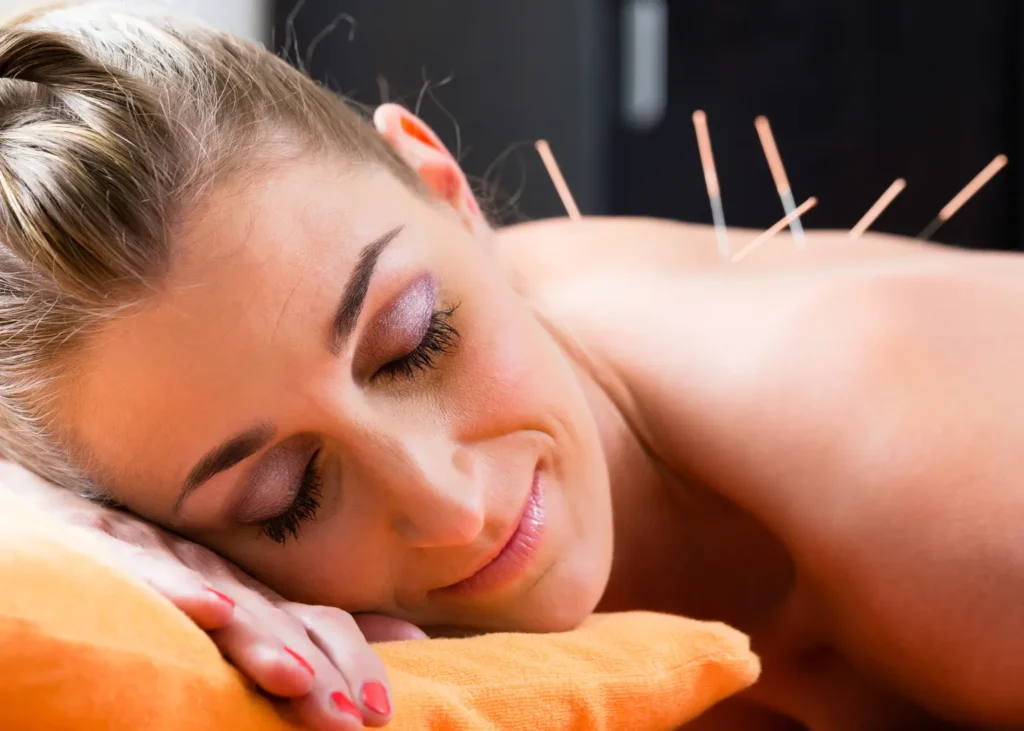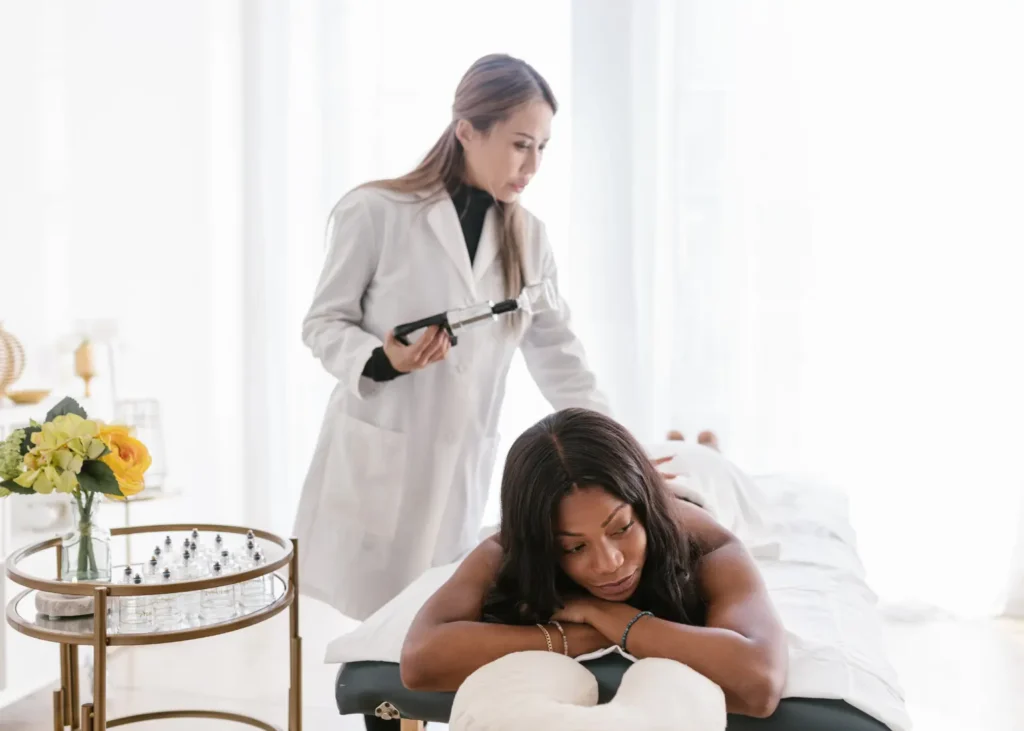Addiction recovery is a challenging journey that often requires a holistic approach. In recent years, there has been growing interest in alternative addiction therapies that address the mind, body, and spirit together. One such approach is ear acupuncture, which is being used as part of holistic addiction treatment programs to help manage cravings and withdrawal symptoms. This technique involves stimulating specific points on the ear to produce therapeutic effects throughout the body.
What Is Auricular Acupuncture?
This is a specialized form of acupuncture focused on the outer ear. In Traditional Chinese Medicine (TCM), the ear is viewed as a microsystem of the entire body, meaning specific points on the ear correspond to organs and bodily functions. By inserting wonderful needles into these ear points, practitioners aim to influence physical and emotional health. This form of auricular therapy can also be considered a type of pressure point therapy, since it targets defined pressure points on the ear’s surface.
Auricular acupuncture was formalized in the mid-20th century but has roots in ancient practices. Both ears contain a full reflex map of the body, so stimulating points on one ear can impact systems head-to-toe. There are ear points believed to relate to the lungs, liver, kidneys, and even emotional centers. Practitioners carefully select points based on the patient’s needs. In the case of addiction recovery, points that help calm the nervous system and relieve physical distress are commonly used. The treatment is typically gentle: needles are inserted shallowly and left in place for about 30–45 minutes while the patient relaxes. As a form of auricular therapy, ear acupuncture is often delivered in a quiet, calming environment. Patients usually sit or lie comfortably during the session. It is also easy to integrate with other treatments – it does not involve any medications and has minimal side effects, making it a versatile tool in comprehensive addiction care.
History and Origins of Auricular Acupuncture in Addiction Treatment
The modern use of ear acupuncture for addiction began in the 1970s during a tumultuous period of heroin abuse in New York City. At the Lincoln Hospital detox clinic in the South Bronx, physicians led by Dr. Michael Smith pioneered a simple ear acupuncture protocol as an alternative to methadone. This development was inspired by earlier research from Hong Kong neurosurgeon Dr. H.L. Wen, who had discovered that electrical stimulation of an ear point (the lung point) could relieve acute opiate withdrawal symptoms. Building on that insight, Dr. Smith and colleagues started using ear acupuncture on patients undergoing withdrawal, finding that it helped reduce their drug cravings and eased withdrawal discomfort.
This grassroots innovation evolved into a standardized approach over the next decade. In 1985, the nonprofit National Acupuncture Detoxification Association (NADA) was established to formalize training and spread the technique. NADA refined the ear protocol into a five-point treatment and began teaching it to healthcare workers across the United States. By the 1990s, the method was sometimes dubbed an acupuncture detox protocol and had gained international attention. The World Health Organization even recognized acupuncture as a valid treatment for substance abuse in 1996, lending further legitimacy to the practice.
Over the ensuing decades, auricular acupuncture for addiction recovery spread rapidly. NADA training programs turned out thousands of practitioners, and the technique was adopted in diverse settings, from urban methadone clinics and veterans’ hospitals to jails and rehab centers. What started as an experimental holistic addiction treatment in a community clinic became a worldwide movement in integrative medicine. Today, the use of ear acupuncture to support addiction recovery is common across the U.S. and many other countries, reflecting both its practicality and the demand for holistic treatment center approaches that treat the whole person.
How Does Auricular Acupuncture Work for Addiction Recovery?

One of the most common questions is how inserting needles in the ear can influence addiction outcomes. From a TCM perspective, auricular acupuncture works by unblocking the flow of vital energy (qi) along meridians, restoring balance to bodily systems that are disrupted by substance use. But there are also several Western scientific theories for its effects. Research suggests that stimulating ear points activates the central nervous system through cranial nerves, sending signals to the brain’s pain and stress-regulating centers. The ear acts as a “remote control” to modulate brain regions involved in addiction, stress response, and cravings.
Biochemical evidence shows that acupuncture triggers the body to release various neurotransmitters and endorphins. Auricular acupuncture can boost levels of endorphin, dopamine, serotonin, and other brain chemicals associated with mood and reward. By prompting the release of these natural painkillers and mood stabilizers, ear acupuncture may reduce the physiological intensity of withdrawal and cravings. This is one reason practitioners speak of acupuncture for cravings. The treatment can produce a mild euphoria or deep relaxation, helping to satisfy the brain’s urge for the addictive substance in a healthier way.
Benefits of Ear Acupuncture in Addiction Recovery
Several ear acupuncture benefits make it a compelling complementary therapy for addiction recovery. People who receive auricular acupuncture during detox or rehab often report improvements in both their physical symptoms and emotional state. Some key benefits observed include:
- Anxiety and stress relief: Auricular acupuncture is well known for its anxiolytic (anxiety-reducing) effect. Patients often feel calmer and centered after a session. This reduction in stress can prevent relapse, as stress is a major trigger for substance use.
- Improved sleep: Insomnia is common in early recovery. Ear acupuncture sessions, especially when done in the evening, have helped many individuals sleep better. The deep relaxation from the needles often translates into more restful sleep at night.
- Mood stabilization: People undergoing ear acupuncture frequently report improved mood and fewer depressive symptoms. By promoting the release of endorphins and serotonin, the treatment can lift overall mood and create a sense of well-being.
- Enhanced mental clarity: Recovering individuals sometimes describe feeling “clear-headed” and able to think more rationally after acupuncture. This mental clarity can support engagement in counseling and other recovery activities.
- Better treatment engagement: Perhaps one of the most important benefits is that patients who receive acupuncture tend to be more engaged and retained in addiction treatment. The positive experience can increase their openness to counseling, group therapy, and other aspects of rehab.
Taken together, these auricular acupuncture benefits contribute to a more stable and comfortable recovery process. When people feel less sick, less stressed, and more in control of their emotions, they are better able to focus on the hard work of overcoming addiction.
The NADA Acupuncture Detox Protocol
The most widely implemented acupuncture detox protocol in addiction treatment is the NADA 5-point ear acupuncture method. “NADA” stands for National Acupuncture Detoxification Association, the organization that developed and standardized this protocol. The NADA protocol uses up to five specific acupuncture points on each ear:
- Shen Men (Spirit Gate): This point is highly valued for its profound calming effects, making it particularly beneficial for individuals experiencing the intense emotional turmoil often associated with withdrawal and early recovery. By alleviating anxiety and promoting a sense of inner peace, Shen Men helps to stabilize the patient’s emotional state, fostering a more conducive environment for healing and progress in their addiction treatment journey. Its ability to soothe the mind is central to the NADA protocol’s effectiveness.
- Sympathetic Point: The Sympathetic point plays a crucial role in balancing the autonomic nervous system, which is frequently dysregulated in individuals undergoing addiction recovery. By promoting relaxation and significantly reducing stress responses, this point aids in mitigating the physical and psychological tension that can trigger cravings and relapse.
- Kidney Point: Associated with vital energy and courage, the Kidney point is essential for restoring balance and inner strength within the individual. In the context of addiction, where personal power and resilience may be diminished, stimulating this point helps to re-energize the body and mind. It fosters a sense of determination and fortitude, empowering individuals to face the challenges of recovery with renewed resolve and to build a solid foundation for lasting sobriety.
- Liver Point: This point is strategically chosen for its significant role in supporting detoxification processes within the body, which are critical for individuals recovering from substance use. Beyond its physical benefits, the Liver point also helps to reduce irritability and anger, common emotional disturbances experienced during withdrawal and early recovery.
- Lung Point: The Lung point is believed to assist individuals in processing and “letting go” of grief, an often-unacknowledged underlying emotion in addiction. Furthermore, it enhances respiratory function, which can be compromised by prolonged substance use. By addressing both emotional release and physical well-being, the Lung point offers a holistic benefit, helping patients to breathe more freely both literally and figuratively, supporting their journey towards emotional and physical restoration.
One of the remarkable aspects of the NADA approach is its simplicity and scalability. It was designed for use in busy public clinics and can be delivered in a group setting. In a typical NADA session, a group of clients will sit together in a circle or rows. A trained provider walks around inserting sterile needles into each person’s ears. Then soft music or silence is observed as everyone sits together during the treatment time. This communal aspect creates a shared healing experience and can reduce the isolation often felt in recovery. The protocol’s standardization means that whether you receive NADA acupuncture in New York, Los Angeles, or even abroad, the treatment points and procedures are essentially the same.
Adoption and Integration in Holistic Treatment Centers

Over the last few decades, auricular acupuncture has moved from the fringes of addiction treatment to the mainstream of holistic treatment centers. In the United States, treatment programs began adding acupuncture in the 1980s and 90s, and by the early 2000s, an estimated 500 addiction clinics in the U.S. were using some form of acupuncture in their recovery services. Worldwide adoption has been significant as well – at least 1,500 programs internationally had integrated acupuncture for addictions by the mid-2000s, and those numbers have only grown. This widespread adoption was facilitated by advocacy from organizations such as NADA and endorsement in various best-practice guidelines.
Finding a Qualified Practitioner
When seeking auricular acupuncture for addiction recovery or other health concerns, it is crucial to find a qualified practitioner to ensure both safety and effectiveness. Start by looking for acupuncturists who are licensed in your state or country—licensing requirements vary, but practitioners should have formal training and certification in acupuncture. In the United States, the National Certification Commission for Acupuncture and Oriental Medicine (NCCAOM) maintains a directory of certified professionals, which can be a helpful resource for locating reputable providers. Additionally, many states have their own licensing boards that oversee acupuncture practice; checking these registries can confirm a practitioner’s credentials and standing.
Before scheduling a session, consider asking potential practitioners about their specific experience with auricular acupuncture, especially in addiction treatment settings. Inquire how long they have been practicing, what their training entailed, and whether they have worked with clients facing similar challenges. You may also want to ask about their approach to integrating ear acupuncture with other therapies, and whether they accept insurance or offer sliding scale fees. Recommendations from healthcare providers, addiction counselors, or trusted friends can also point you toward reputable practitioners.
Today, many holistic mental health facilities include auricular acupuncture as part of their recovery curriculum. Rather than seeing it as an alternative or experimental therapy, these centers view ear acupuncture as a complementary therapy that works synergistically with counseling, group therapy, and medical care. For instance, an integrative addiction clinic such as ModMeds offers ear acupuncture therapy alongside psychotherapy, mindfulness meditation, exercise, and nutrition counseling. The idea is to treat the whole person.
What to Expect During an Auricular Acupuncture Session
During an auricular acupuncture session, individuals can expect a calm, supportive environment where comfort is prioritized. The practitioner will ask about your symptoms and goals before gently inserting thin, sterile needles into specific points on the outer ear. Most people sit or recline quietly during the session, which typically lasts 20 to 40 minutes. You may feel a brief, mild sting as the needles are placed, but many report little to no discomfort. After insertion, it’s common to experience deep relaxation, a sense of calm, or even mild euphoria. The practitioner will remove the needles at the end, usually painlessly.
The integration of ear acupuncture into these programs has yielded some clear advantages. First, providing a physical wellness component signals to clients that their treatment is not just about talk or medication, it’s about restoring balance in their bodies as well. This can increase a client’s sense of actively “doing something” to feel better, which enhances engagement. Second, the calming effects of auricular acupuncture often make individuals more open and attentive in subsequent therapy sessions. This mind-body interplay is a hallmark of holistic methods for addiction recovery: improvements in physical relaxation lead to better participation in psychological work.
Ear Acupressure and Pressure Point Therapy Alternatives

For individuals who are hesitant about needles, acupressure for the ears is an alternative approach that falls under the umbrella of auricular therapy. Ear acupressure involves placing tiny seeds or beads on specific ear points and securing them with adhesive tape. These seeds apply continuous, gentle pressure to the points. The person can periodically press on the seeds to stimulate the point, providing an effect similar to acupuncture but without needles. This technique is essentially a form of pressure point therapy targeting the same ear microsystem used in acupuncture.
Safety and Training Considerations
Auricular acupuncture is generally considered a safe, low-risk therapy when performed by a licensed and properly trained practitioner. The reasons auricular acupuncture has been embraced in addiction treatment are its strong safety profile. When performed by a trained practitioner, there are virtually no serious risks or side effects. The needles used are extremely thin, sterile, single-use disposables, and they penetrate only the surface of the skin on the ear. There is no risk of chemical interactions and no risk of sedation or impairment. As long as proper clean needle technique is used, the risk of infection is negligible. The gentleness of the procedure makes it suitable for a wide range of people, including those who might be medically fragile.
Certain populations may require additional caution. For example, people with bleeding disorders, those taking anticoagulant medications, or individuals with compromised immune systems should inform their practitioner prior to treatment, as they may be at increased risk for bleeding or infection. Pregnant individuals should also consult with their healthcare provider before beginning, as some acupuncture points are traditionally avoided during pregnancy. Additionally, those with metal allergies should notify their practitioner, as some needles may contain trace metals that could trigger a reaction.
While rare, more serious adverse effects have been reported in the medical literature, such as persistent pain, significant bleeding, or infection requiring medical attention. However, these cases are uncommon and typically linked to improper technique or lack of practitioner training. It is also essential to recognize that auricular acupuncture is not a substitute for evidence-based medical or psychological care. Individuals with complex medical or psychiatric conditions should use auricular acupuncture as a complementary therapy within a broader treatment plan, under the guidance of qualified healthcare professionals.
Auricular acupuncture has emerged as a powerful complementary tool in the field of addiction recovery. It offers a tangible way to alleviate suffering and bolster resilience during one of the most challenging periods of a person’s life. By calming the mind, strengthening the body’s own defenses, and nurturing the spirit, auricular acupuncture embodies that principle and offers hope and relief to those on the path of recovery.
Sources
- Cleveland Clinic – Can NADA Acupuncture Help With Addiction and Trauma? (Health Essentials, Oct. 14, 2021)
- Yale School of Medicine – Ear acupuncture: A tool for recovery (Lucile Bruce, Nov. 13, 2011)
- Lee, E. J. (2022). Effects of auriculotherapy on addiction: a systematic review. Journal of Addictive Diseases, 40(3), 415-427
- Bemis, R. (2013). Evidence for the NADA Protocol: Summary of Research. National Acupuncture Detoxification Association
- Motlagh, F.E. et al. (2016). Acupuncture therapy for drug addiction: review of effects and mechanisms. Chinese Medicine, 11(16)
- Stuyt, E.B. & Voyles, C. (2016). The NADA protocol, auricular acupuncture for substance use and behavioral health disorders: current perspectives. Substance Abuse and Rehabilitation, 7, 169-180